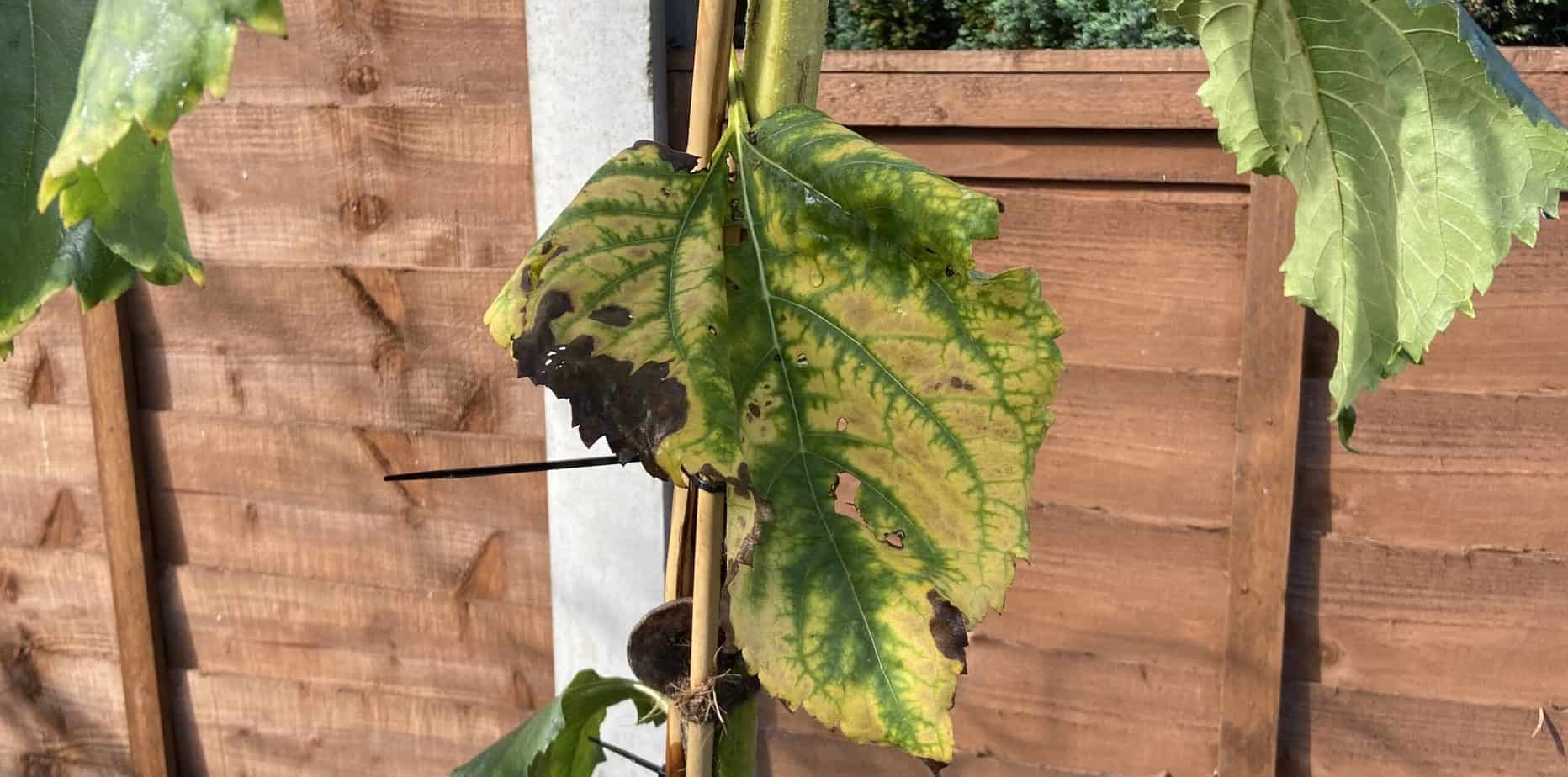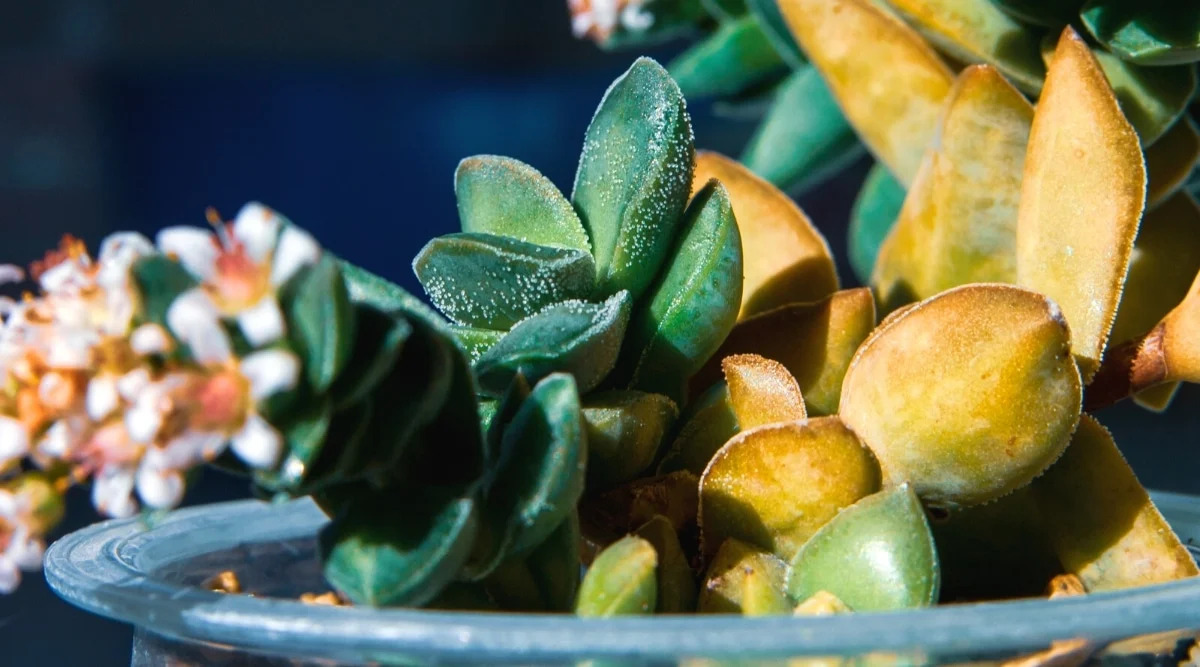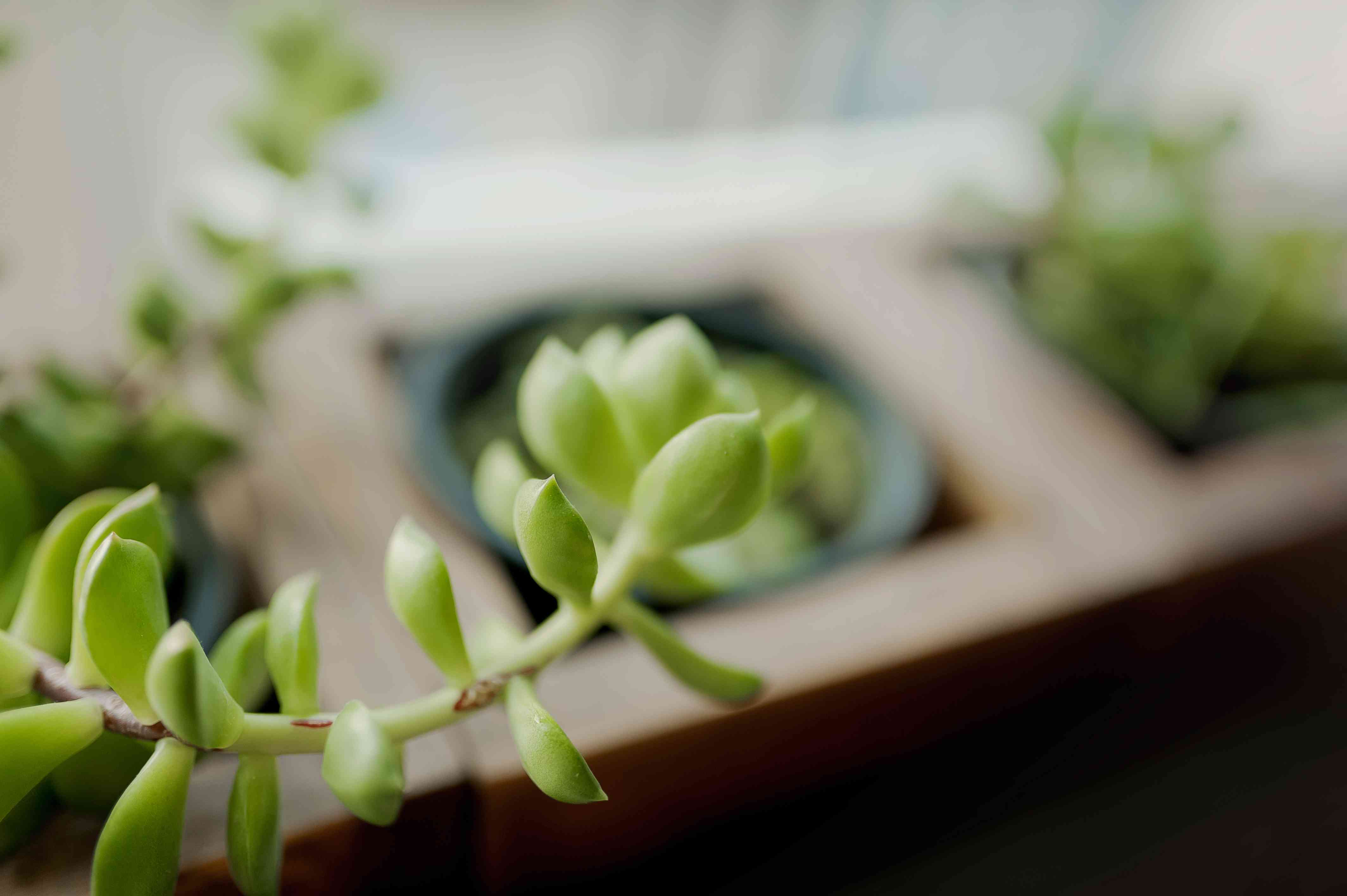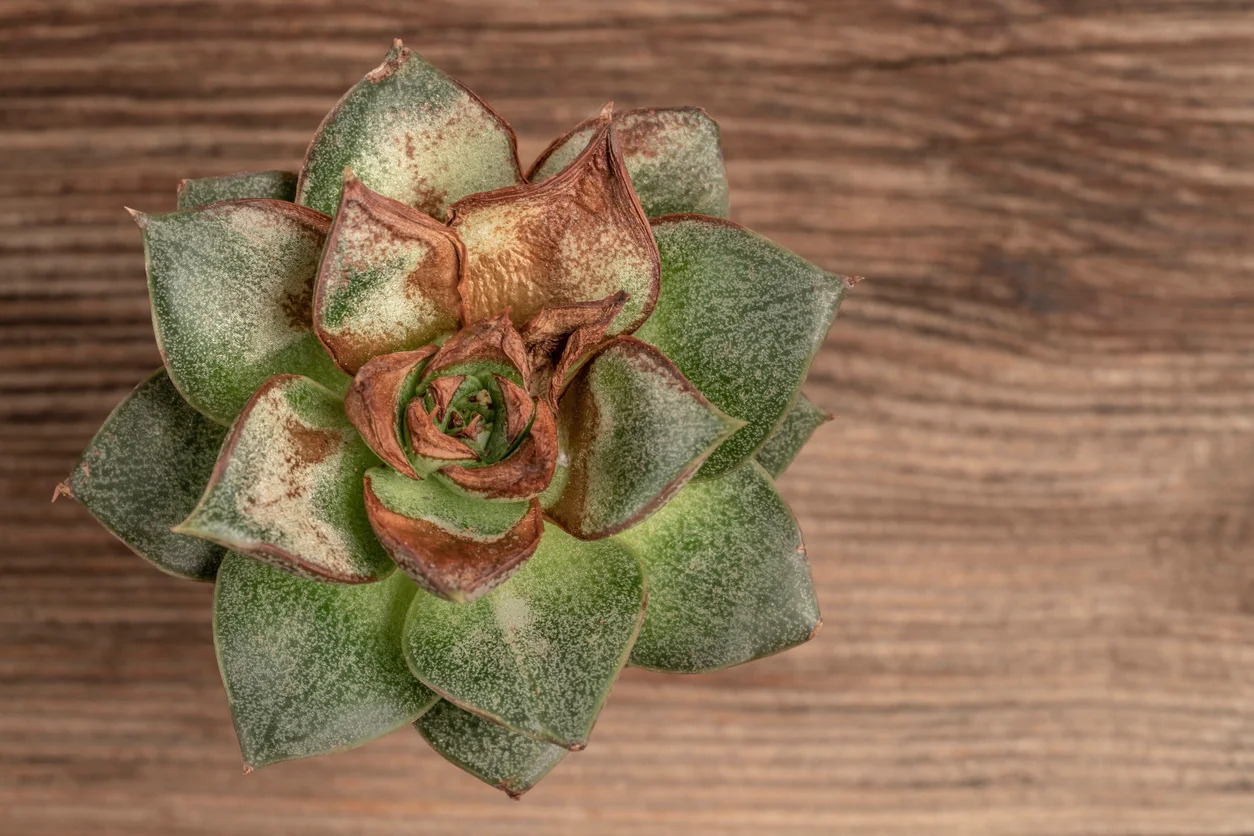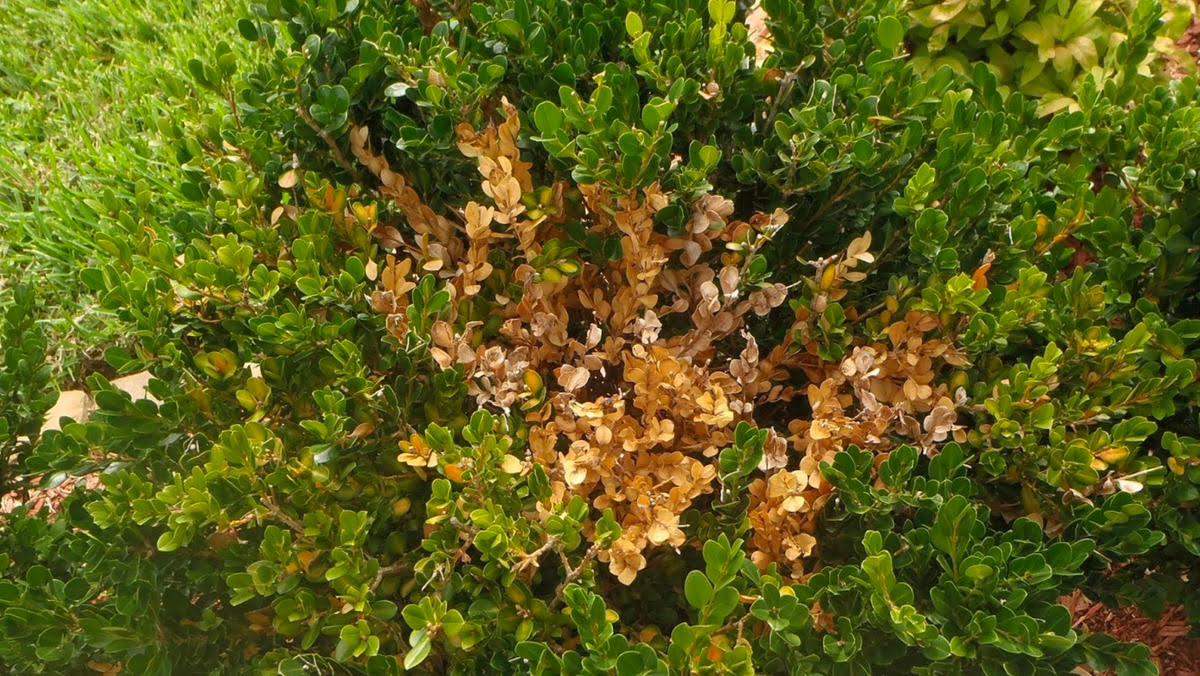Home>Types of Gardening>Ornamental Gardening>Why Are My Succulents Turning Purple


Ornamental Gardening
Why Are My Succulents Turning Purple
Published: December 28, 2023
Discover why your succulents are turning purple and learn how to care for them in this comprehensive guide to ornamental gardening.
(Many of the links in this article redirect to a specific reviewed product. Your purchase of these products through affiliate links helps to generate commission for Chicagolandgardening.com, at no extra cost. Learn more)
Table of Contents
Introduction
Succulents have gained popularity in the realm of ornamental gardening due to their low maintenance and striking beauty. These resilient plants are known for their ability to store water in their leaves, stems, and roots, making them well-suited for arid environments. However, as a succulent enthusiast, you may have noticed an intriguing phenomenon – some of your beloved succulents are turning a captivating shade of purple. This unexpected transformation can be a source of curiosity and concern, prompting you to delve into the underlying reasons behind this intriguing color change.
The mesmerizing purple hues that adorn succulents can be both enchanting and perplexing. While some varieties naturally exhibit purple pigmentation as part of their genetic makeup, the sudden appearance of this color in succulents that were previously green or another shade may signal an underlying issue. As you embark on this journey of discovery, it's essential to understand the nature of succulents, their unique characteristics, and the potential factors that could contribute to their newfound purple allure.
In the upcoming sections, we will unravel the mystery behind the purple transformation of succulents, delving into the intricate interplay of environmental factors, nutrient deficiencies, and the impact of pests and diseases. By gaining insight into these aspects, you will be equipped with the knowledge to nurture your succulents and restore them to their vibrant, healthy state. Let's embark on this captivating exploration of succulents and the captivating allure of their purple hues.
Understanding Succulents
Succulents, with their diverse array of shapes, sizes, and colors, have captivated the hearts of gardening enthusiasts and interior decor aficionados alike. These remarkable plants belong to various botanical families, including but not limited to Aizoaceae, Cactaceae, and Crassulaceae, each contributing to the rich tapestry of succulent diversity. Their ability to thrive in arid and semi-arid regions can be attributed to their unique adaptation to water-stressed environments.
One of the defining features of succulents is their capacity to store water in specialized tissues, such as their fleshy leaves, stems, or roots. This adaptive mechanism allows them to endure prolonged periods of drought by utilizing the stored moisture to sustain essential physiological processes. The presence of specialized water-storing cells, such as parenchyma cells, enables succulents to retain water more effectively than conventional plants, endowing them with resilience in the face of water scarcity.
Furthermore, the remarkable diversity of succulents encompasses a spectrum of captivating pigments, including shades of green, blue, red, and, notably, purple. While some succulents naturally exhibit purple pigmentation as a genetic trait or as a response to environmental cues, the sudden emergence of purple hues in previously green succulents may serve as an indicator of underlying stress or physiological changes.
Understanding the intrinsic characteristics of succulents, including their water-storing adaptations and diverse pigmentation, is paramount in discerning the factors that contribute to the enigmatic purple transformation observed in these resilient plants. By delving into the intricacies of succulent biology, we can unravel the captivating allure of their purple hues and gain insights into the potential causes behind this mesmerizing phenomenon.
Causes of Purple Succulents
The emergence of purple hues in succulents can be attributed to a myriad of factors, ranging from environmental influences to physiological responses. Understanding these potential causes is essential in deciphering the captivating transformation of succulents into stunning shades of purple.
- Environmental Factors: The interplay of environmental elements, such as sunlight exposure and temperature fluctuations, can significantly impact the pigmentation of succulents. Intense sunlight, particularly in high-altitude regions, can stimulate the production of anthocyanin pigments, contributing to the manifestation of purple hues in succulents. Conversely, cooler temperatures can also trigger the accumulation of anthocyanins, leading to a visually striking display of purple pigmentation.
- Nutrient Deficiency: Inadequate access to essential nutrients, particularly phosphorus and nitrogen, can elicit a color change in succulents, causing them to exhibit purple discoloration. Phosphorus deficiency, in particular, can impede chlorophyll production, leading to a reduction in green pigmentation and the subsequent prominence of purple tones. Understanding the nutritional requirements of succulents is crucial in addressing and preventing nutrient-related color variations.
- Pests and Diseases: The presence of pests, such as spider mites or aphids, can instigate stress responses in succulents, triggering the accumulation of anthocyanin pigments and resulting in a purple appearance. Additionally, fungal infections or physiological disorders can induce color changes in succulents, underscoring the importance of proactive pest management and vigilant monitoring for signs of disease.
By exploring these potential causes of purple succulents, we can gain valuable insights into the intricate mechanisms that underpin the captivating color transformations observed in these resilient plants. The dynamic interplay of environmental influences, nutrient dynamics, and the impact of pests and diseases collectively contributes to the alluring spectacle of purple succulents, inspiring a deeper appreciation for the resilience and adaptability of these botanical marvels.
Environmental Factors
Environmental factors play a pivotal role in shaping the pigmentation of succulents, influencing the manifestation of captivating purple hues that adorn these resilient plants. The interplay of sunlight exposure, temperature variations, and altitude can orchestrate the mesmerizing color transformations observed in succulents, offering a fascinating glimpse into the dynamic relationship between plants and their surroundings.
Sunlight Exposure: The intensity and duration of sunlight exposure can profoundly impact the pigmentation of succulents. In regions characterized by high-altitude sunlight, succulents may undergo a striking transformation, developing vibrant purple hues as a response to the heightened levels of ultraviolet (UV) radiation. This phenomenon is attributed to the synthesis of protective pigments, such as anthocyanins, which serve to shield the plant’s tissues from potential UV-induced damage. The resulting purple pigmentation not only enhances the plant’s UV tolerance but also bestows an enchanting visual allure upon the succulent, captivating the beholder with its resplendent hues.
Temperature Fluctuations: The dynamic nature of temperature fluctuations can also influence the pigmentation of succulents, contributing to the emergence of purple tones in these remarkable plants. Cooler temperatures, particularly during the winter months or in regions characterized by distinct seasonal changes, can stimulate the accumulation of anthocyanin pigments in succulents, leading to the manifestation of captivating purple hues. This physiological response serves as a testament to the adaptability of succulents, as they harness the protective benefits conferred by anthocyanins to navigate the challenges posed by fluctuating environmental conditions.
Altitude: Succulents thriving in high-altitude environments are exposed to unique atmospheric conditions that can influence their pigmentation. The heightened UV radiation at higher altitudes can stimulate the production of anthocyanins, contributing to the development of purple hues in succulents as a protective response to the elevated UV exposure. This natural adaptation underscores the resilience of succulents, as they harness their inherent genetic potential to thrive in diverse ecological niches, adorning themselves with the captivating allure of purple pigmentation in the process.
By delving into the intricate interplay of environmental factors, we gain a deeper appreciation for the dynamic forces that sculpt the mesmerizing purple hues of succulents, unveiling the profound influence of sunlight, temperature, and altitude on the captivating color transformations observed in these botanical marvels.
Nutrient Deficiency
The captivating purple hues exhibited by succulents can also be indicative of underlying nutrient deficiencies, shedding light on the intricate relationship between essential nutrients and the vibrant pigmentation of these resilient plants. Understanding the impact of nutrient dynamics on succulents is paramount in deciphering the factors contributing to their enchanting purple transformation.
Phosphorus Deficiency: Inadequate access to phosphorus, an essential macronutrient vital for various physiological processes, can instigate a striking color change in succulents. Phosphorus plays a pivotal role in chlorophyll synthesis, the pigment responsible for the green coloration of plants. When succulents experience a phosphorus deficiency, chlorophyll production may be impeded, leading to a reduction in green pigmentation and the emergence of captivating purple tones. This visual manifestation serves as a poignant indicator of the plant’s nutritional status, highlighting the significance of phosphorus in sustaining vibrant green hues in succulents.
Nitrogen Deficiency: Another crucial nutrient that profoundly influences the pigmentation of succulents is nitrogen. In the absence of adequate nitrogen, succulents may exhibit a visually striking shift in color, with the reduction in chlorophyll content contributing to the prominence of purple tones. Nitrogen deficiency can impede the plant’s capacity to maintain robust green pigmentation, resulting in the captivating display of purple hues that captivate the observer’s gaze. Recognizing the pivotal role of nitrogen in sustaining the verdant beauty of succulents underscores the significance of addressing and preventing nutrient deficiencies to preserve the plant’s visual allure.
By unraveling the intricate relationship between nutrient deficiencies and the emergence of purple hues in succulents, we gain profound insights into the dynamic interplay of essential nutrients and pigmentation dynamics. The captivating allure of purple succulents serves as a visual testament to the intricate balance of nutrient availability and physiological processes, inspiring a deeper appreciation for the resilience and adaptability of these botanical marvels.
Pests and Diseases
The captivating purple transformation observed in succulents may also serve as a poignant indicator of the plant’s response to pests, diseases, and physiological disorders. The presence of pests, such as spider mites and aphids, can instigate stress responses in succulents, triggering the accumulation of anthocyanin pigments and resulting in a visually striking display of purple hues. Additionally, fungal infections or physiological disorders can induce color changes in succulents, underscoring the importance of proactive pest management and vigilant monitoring for signs of disease.
Pest Infestation: Succulents are not immune to the threat of pest infestations, which can elicit stress responses in the plants, leading to the manifestation of purple pigmentation. Pests such as spider mites and aphids can inflict damage on succulents, compelling the plants to activate defense mechanisms that may culminate in the accumulation of anthocyanins. This adaptive response not only serves as a form of protection against pest-related stress but also bestows an enchanting purple allure upon the succulents, captivating the observer with their resplendent hues.
Diseases and Physiological Disorders: Fungal infections and physiological disorders can also contribute to the emergence of purple tones in succulents, signifying the plant’s response to internal and external stressors. Fungal pathogens can disrupt normal physiological functions, prompting succulents to undergo color changes as part of their defense mechanisms. Additionally, physiological disorders within the plant, such as imbalances in hormonal regulation or metabolic processes, can manifest as visually captivating purple pigmentation. Vigilant monitoring for signs of diseases and physiological irregularities is crucial in preserving the health and vibrancy of succulents, ensuring that they continue to thrive in their ornamental splendor.
By delving into the impact of pests, diseases, and physiological disorders on the captivating purple hues of succulents, we gain a deeper understanding of the intricate interplay between plant stress responses and pigmentation dynamics. The visual spectacle of purple succulents serves as a poignant reminder of the resilience and adaptability of these botanical marvels, inspiring a sense of awe and appreciation for their captivating allure.
Conclusion
The captivating allure of purple succulents unveils a mesmerizing tapestry of environmental influences, nutrient dynamics, and the impact of pests and diseases, collectively contributing to the enigmatic color transformations observed in these resilient plants. As we unravel the underlying causes of the purple hues adorning succulents, we gain profound insights into the intricate mechanisms that shape their visual splendor.
From the dynamic interplay of environmental factors, including sunlight exposure, temperature variations, and altitude, emerges a profound appreciation for the resilience of succulents in the face of diverse ecological challenges. The captivating purple pigmentation serves as a testament to the plant’s adaptive prowess, showcasing its ability to harness protective pigments in response to environmental stimuli.
Furthermore, the influence of nutrient deficiencies on the pigmentation of succulents underscores the pivotal role of essential nutrients, such as phosphorus and nitrogen, in sustaining the vibrant green hues that define the plant’s ornamental allure. The emergence of purple tones serves as a poignant indicator of the plant’s nutritional status, highlighting the interconnectedness of nutrient dynamics and pigmentation dynamics.
Moreover, the presence of pests, diseases, and physiological disorders unveils the intricate interplay between plant stress responses and the manifestation of captivating purple pigmentation. Succulents, in their resolute defense against external and internal stressors, adorn themselves with the resplendent hues of resilience, captivating the beholder with their visual allure.
As we conclude this captivating exploration of purple succulents, we are reminded of the profound resilience and adaptability exhibited by these botanical marvels. The enigmatic allure of purple succulents serves as a poignant testament to the intricate dance of nature, inspiring a sense of wonder and appreciation for the captivating transformations that unfold within the realm of ornamental gardening.


